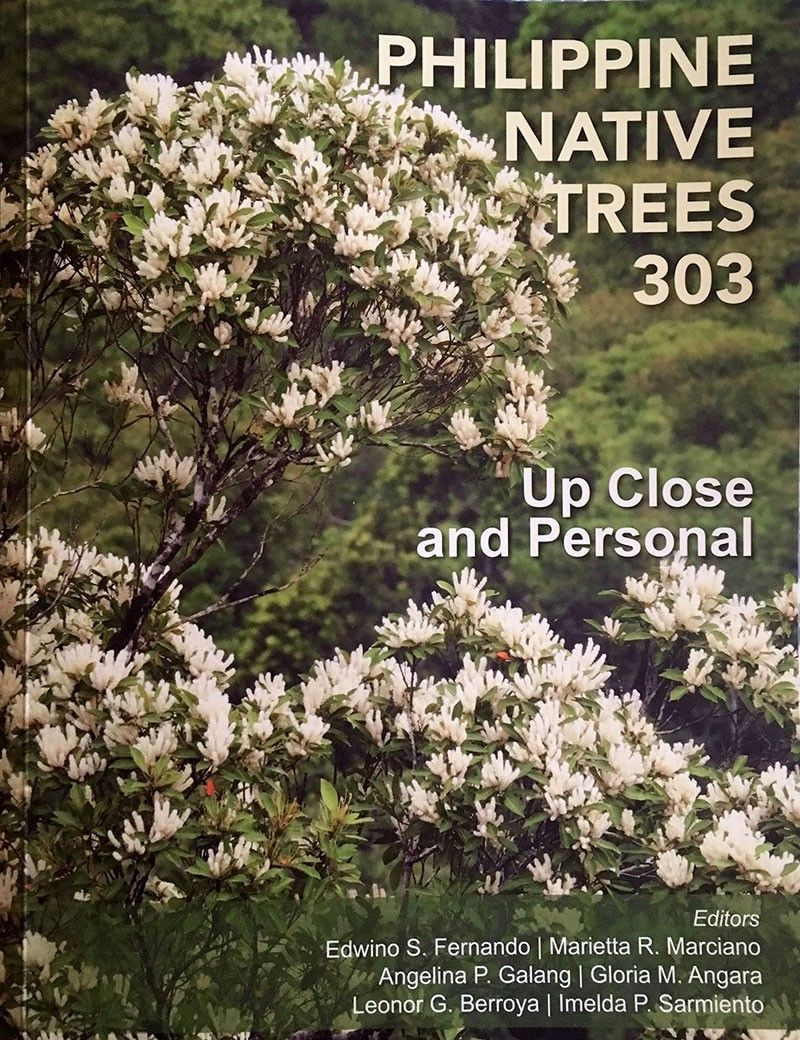Up close and personal with native trees


In January 2015, promoted in this space was the first book in what’s become a notable series, titled Philippine Native Trees 101: Up Close and Personal, published in 2012 by Green Convergence for Safe Food, Healthy Environment and Sustainable Economy, and Hortica Filipina Foundation Inc. It featured 108 native trees, with handsome photographs complementing personal accounts of acquaintance or familiarity with the subjects.
As project director Imelda Sarmiento put it, “The book was put together by non-botanists for non-botanists. So it’s light reading.”
Ime also shared basic information along with the underpinning of their group’s advocacy. “When a tree is said to be native, there are actually two ecological classifications: (one) indigenous — when the flora is native to our country but also to other countries within our climatic zone; and (two) endemic — when it is only found in our country.”
In June 2016, I also reviewed the sequel, Philippine Native Trees 202: Up Close and Personal, by the same publishers, this time presenting 123 species “that deserve to be recognized, appreciated, and propagated.”
Now I’m happy to report that the third book in the series has recently seen print. Philippine Native Trees 303: Up Close and Personal, with editors Edwino S. Fernando, Marietta R. Marciano, Angelina P. Galang, Gloria M. Angara, Leonor G. Berroya and Imelda P. Sarmiento, has 516 full-color pages and weighs 1.8 kilos. Presented with the usual personal stories and given their local names, scientific classification and relevant factoids are 145 native trees, including 10 native palms.
The lead photographers are Arceli M. Tungol and Reynold D.J. Sioson, with close to 60 other contributing photographers. Charisse Eryka R. Delson served as design and layout artist, and Victoria Aliño Camarillo as illustrator.
The book is “gratefully dedicated” to Dr. Oscar M. Lopez, who is tagged by publisher Green Convergence as “Father Nature” not only for his philanthropic help in funding these books and other related ecological concerns and activities, but for his “nurturance of the environment.”
Writes Angelina P. Galang: “By all measure, Osky is a lover of nature, a genuine conservationist and environmentalist. His mountain climbing passion is legend. Not least because he climbed Mt. Kinabalu — the highest mountain in Southeast Asia — at age 81!”
The book also pays tribute to the legendary Leonard Co, “the county’s foremost field botanist” who tragically lost his life in a forest in Leyte in 2010, when he and two companions who were then collecting specimens became victims of military gunfire.
Ronald Achacoso writes: “Leonard’s loss is ultimately this nation’s loss but one that it will never really comprehend. What ultimately killed Leonard Co was tyranny and the habit of mediocrity, ignorance, apathy and indifference.”
In his Foreword, DSLU president Br. Armin A. Luistro, FSC notes: “This third book is an essential contribution not only to our care of the environment, but more importantly to that deeper search for the spirit that resides within and connects with that Great Spirit with whom ‘we live and move and have our being.’”
Among the pieces I’ve read upon first browse, I liked Gloria M. Angara’s “A Tree for Others” that describes how the Mountain Agoho, as differentiated from the agoho or casuarina that grows mostly in the lowlands, “utilize(s) the (atmospheric) nitrogen (it) produced (thanks to its symbiotic relationship with certain soil bacteria’), but passes on this life-giving element to other plants nearby.”
She writes further: “Along the steep and winding road to Dicasalarin, Baler, it was most gratifying to see the mountain agohos dotting the mountain sides, so far undisturbed and wildly ornamental(!)… The rain had come early that year and, indeed, made the mountain agohos glimmer, as though beaded with tiny crystals. As we sped along, the Gymnostoma rumphianum seemed like a fairylike green haze of figures waving a warm welcome.”
Former Tourism Secretary Gemma Cruz Araneta offers a retelling of a legend of the nilad, and concludes her contribution thus: “There is a gorgeous nilad tree on that tiny island at the center of the lagoon of the Manila Zoo. Manileños may not even know that it is a nilad. This one is doubly endangered, threatened by the current Mayor’s plans to convert Manila Zoo into yet another complex of shopping malls and high-rise buildings. Hurry and go there before it is too late; take memorable photos and selfies of the only surviving nilad in Manila, the city that bears its name.”
Nearly 50 other writers contribute similar pieces that are ”up close and personal.” Of the photographic documentation, I found most striking the blossoms and fruits of the uyok, balitantan, maraibai, lanete, paladukai, ayum, labayanan, katmon-kalabaw, balumti, tiagko, anagap, kasupangil, mali-mali, balukanag, bagolan, kamahiuan, malanangka (which inspires a poem, titled “Leafy Venus,” by Maria Milagros G. Agustines), and the Curran lipote (written up by Ime Sarmiento, with its two photographs yet another legacy of Leonardo Co.)
In his afterword, former Secretary of Health Dr. Jaime Galvez-Tan, who promotes medicinal plants and trees, writes: “Through the series of Books 101, 202 and 303 and more to come, there is hope that Filipinos of today and the future will see the rebirth of our natural resources and environment, the blossoming once more of our trees and forests, and the creation of life, health, wellness and well-being.”
Ime Sarmiento says: “With these three books, we’ve covered roughly 10% of our 3,600 God-given trees. We have 3,224 more to cover. If we do 100 species per year, that’s 32 years to go!” She trusts that current-day millennials can be the next generation to continue the epic undertaking.
Here’s hoping that generations of “Fr. Nature”-type benefactors will also continue to help it along.



















